
To anticipate the economic recovery of the gastronomic sector, the maitre d’s can draw up concrete proposals with their management, restaurant owners or chefs, starting from the following assumptions :
The example of the type of restaurant chosen is at the bib gourmand michelin guide level (bistronomy) or 1 Michelin star level. We have considered the case of a restaurant manager with few financial means to comply with these standards (case, for example of a chef-owner), thus ruling out the most expensive solutions. We drew on the latest collective work carried out by the profession, organized by the Association for the safeguarding and promotion of the heritage of fine dining service : the French service charter, written by 35 professionals in 2017. Click here to access it.
You can participate in this collective work by writing to us at the following address : direction@maitredhotel.online
or by writing a comment to this article below.
What can the front office team can bring to the new type of organization?
1) They will recreate the link between guests and restaurants thanks to their human qualities.
2) They will relieve the kitchen teams by making more preparations in the dining room. Draconian production standards will force the cook to modify his culinary practices. A few gestures will reduce the time required for cooking in the kitchen (for example pouring a sauce). Some of its recipes can be partly made in front of the customer, thanks to different procedures and gestures.
3) They will reassure customers, by their postures and their words, but also by their techniques, by presenting whole pieces, cut out in the dining room. The sight of a beautiful poultry, a leg of lamb, a strip of excellent quality salmon, will be an essential asset for the restaurant in these troubled times.
4) They will act as ambassadors for the chef, his cuisine but also local and national products.
Mister Jean-Pierre Paroix, owner of the hotel and restaurant les bains de Secours, à Sévignacq-Meyracq (64260), former president of « restaurateurs du Bearn et Soule » and member of l’l’UMIH national bureau, helped us in this article.
Here is the walkthrough of a client in the solution we imagined.
First step, outside the restaurant
The ideal would be to operate as much as possible by reservation and to spread the arrivals over time (for example every quarter of an hour). It should be possible not to create a queue at the entrance of the restaurant which will have to be managed with a meter distance between each customer. Upon arrival, at the exit of the car park, the customer will find the restaurant menu in large format, as well as an invitation to enter the menu in their mobile phone using a proposed QR code. An advantage of this method is customer loyalty, since he may keep the restaurant menu on his phone for a future experience. In front of the restaurant entrance, a bottle-dispenser of hydro-alcoholic solution is available.
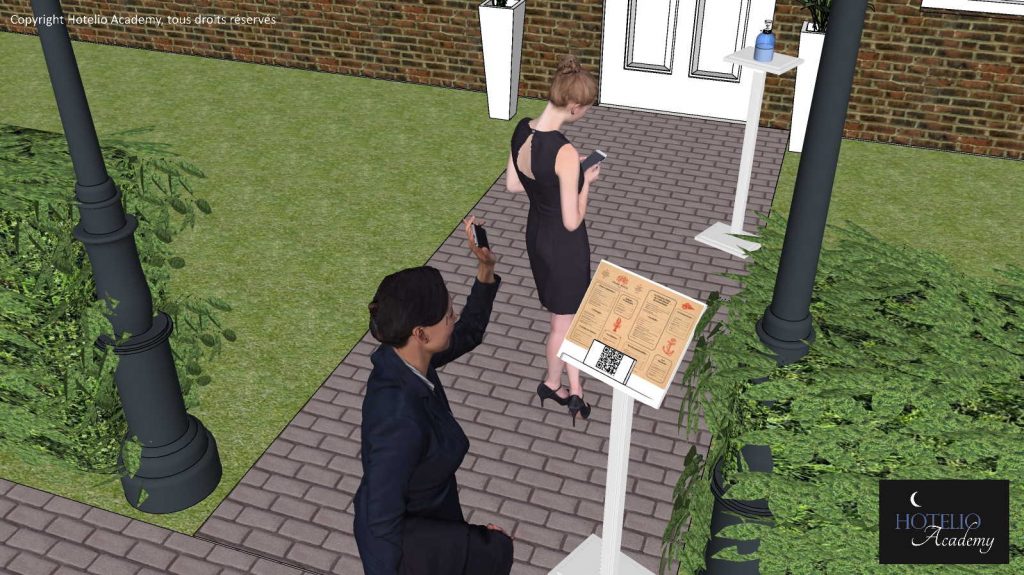
Second step, upon reception
With a front thermometer, the hostess checks the customer’s temperature.
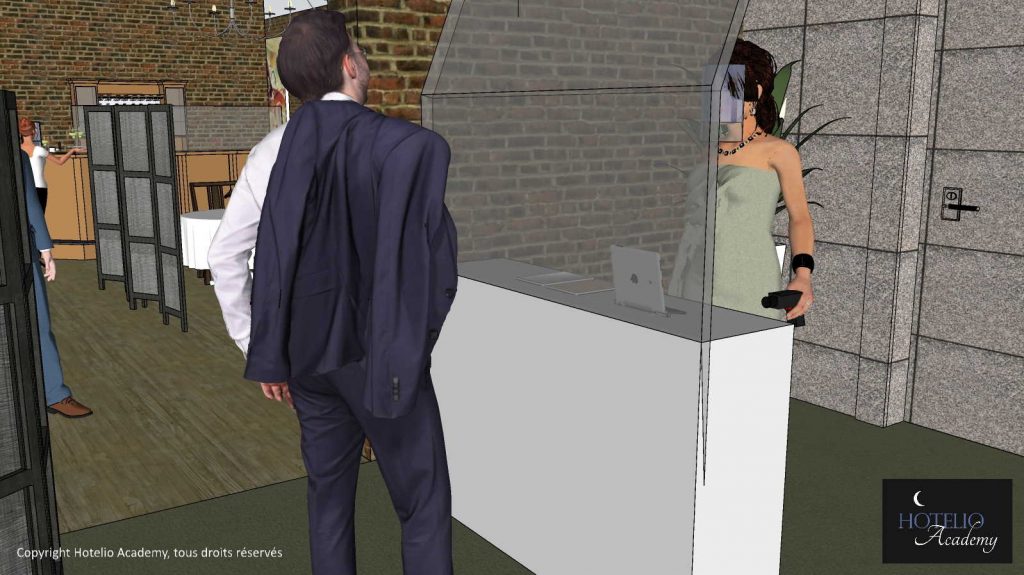
All employees are equipped with a visor, instead of a mask, to avoid giving an impression that is too easily assimilated to the hospital world. Employees also have white disposable gloves for the same reason. Instead of a visor, a breath stop mask can be considered (Guillaume Bonnard, Sodexo).
The hostess offers customers the opportunity to use the toilet before setting up at the table, in order to respect a one way only step forward until the moment of exit (no round trips of customers in the dining room).
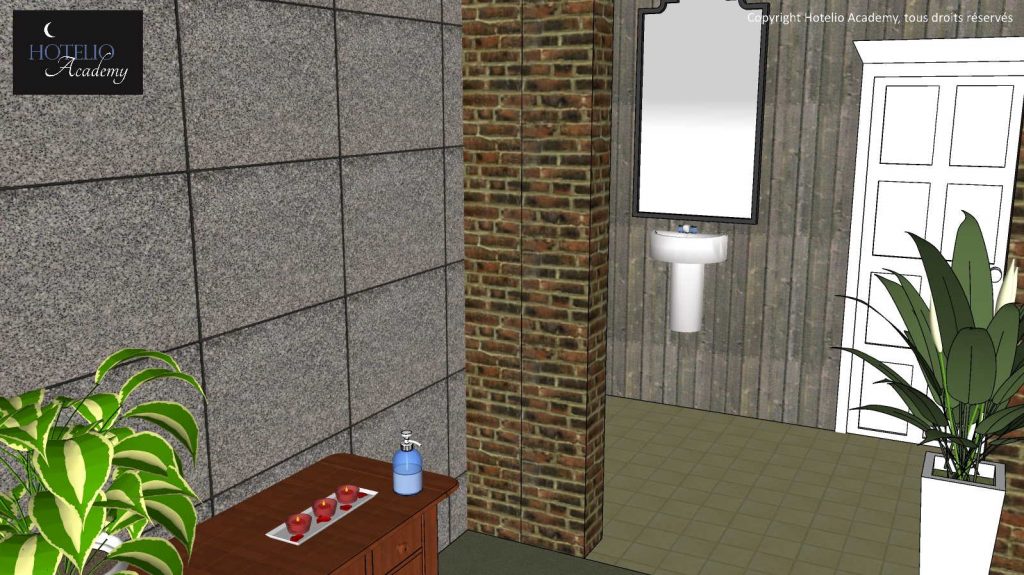
The guests, after their passage to the toilets, will be isolated in a kind of living room arranged with seats sufficiently spaced from each other and with separations between the different groups of guests (separations ). Surfaces touched by customers must be able to be disinfected after each use. Fabric seats or armchairs should therefore be prohibited.
Warning : this is only a suggestion, we are fully aware that many restaurants do not have this area. The idea is just to be able to divide the flow of customers at the entrance so as to respect a sufficient social distance.
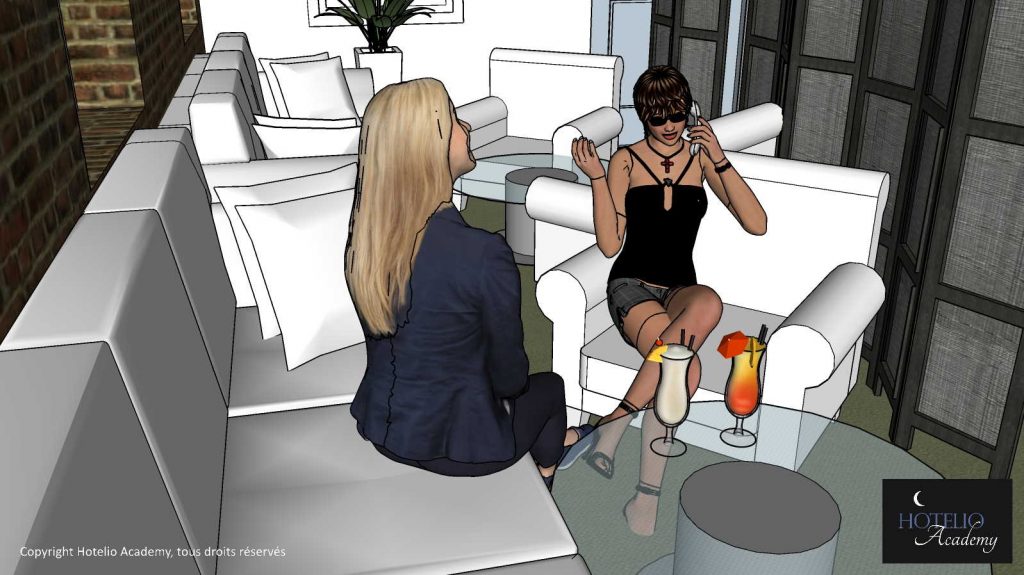
Guests, for those who have not flashed the menu at the entrance of the restaurant, can receive a tablet in order to choose the food and drinks. These tablets will be disinfected in front of the customer, before handing them over and afterwards as well
Second step, entering the dining room
The maitre d accompanies guets quickly so that they are not in contact with any other table.
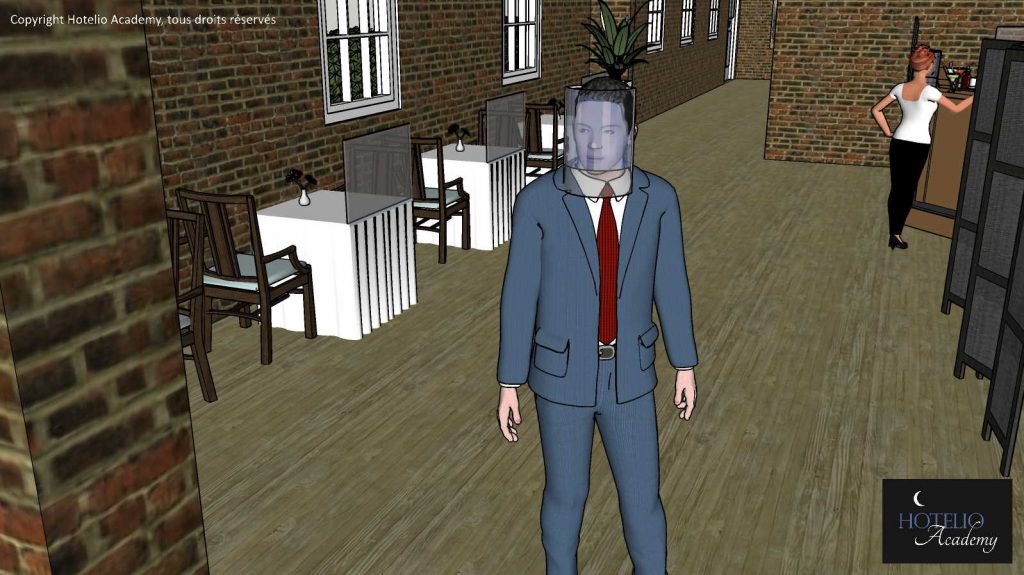
Installation on the terrace or outside will be preferred.
Air conditioning will be stopped because it is a vector of the virus.
The tables are sufficiently spaced (more than a meter) and the seats are arranged in such a way that guests between the tables are not facing each other. Several types of tables are available to satisfy each client, the tables can accommodate up to 8 guests maximum, according to government recommendations.
Glass or plexiglass plates make it possible to partially isolate each table from the rest of the room. Customers don’t face each other.
Claustras or screens (separations) allow you to add distance to other tables.
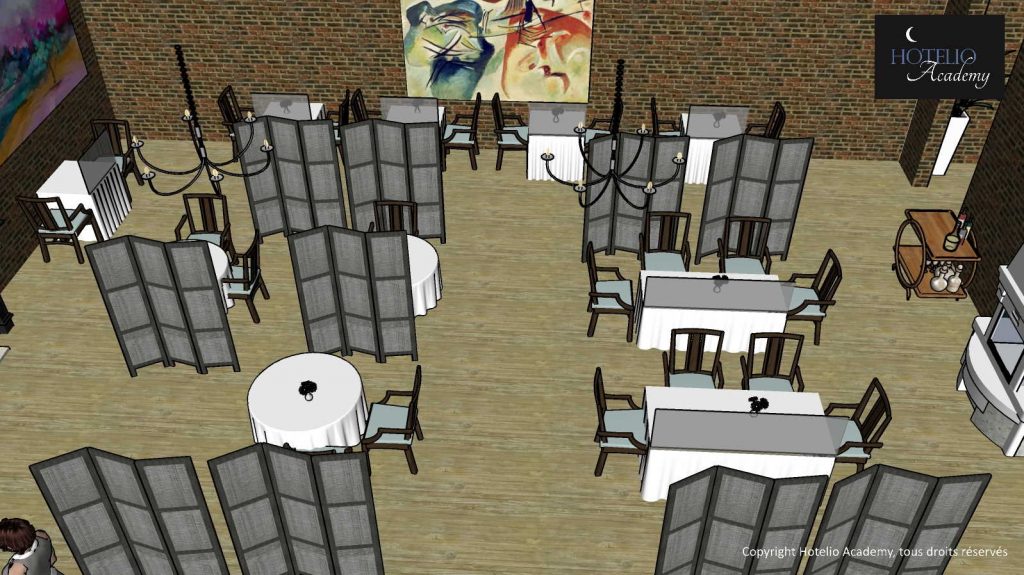
The ideal would be to have an apparent kitchen (but impossible in many restaurants), the chefs equipped with masks, coats, charlottes or toques and gloves, to reassure the customers a perfect mastery of the hygiene protocols. But neither should we scare clients and make them feel like they are in a hospital kitchen.
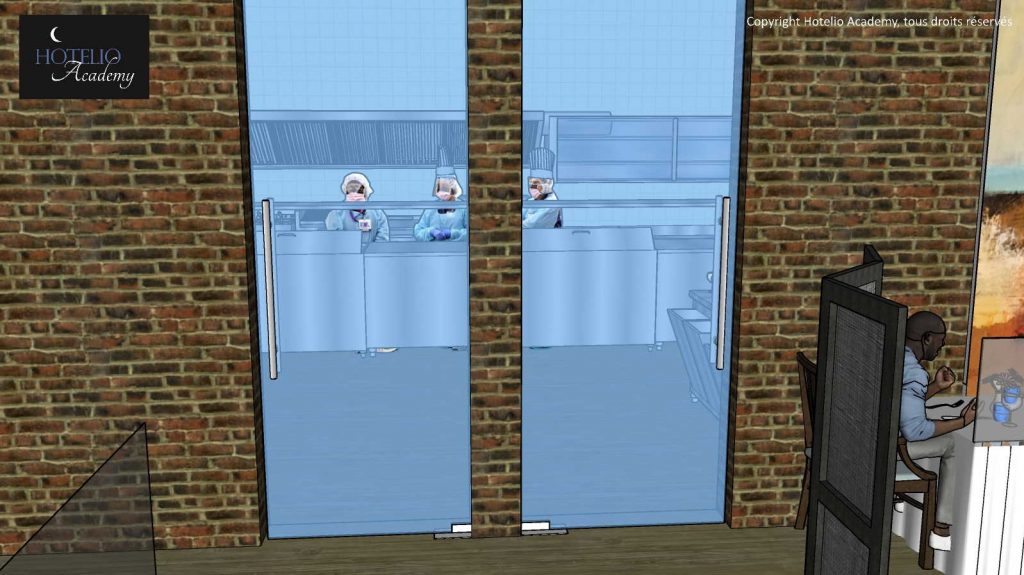
Third step, meal time
The choice of the tablecloth was privileged, after many hesitations, because it presents a reassuring side for a guest (return to common values on the identity of a French restaurant). However, there are hygiene issues regarding the spread of the virus. We offer the placement of a changed tablecloth on departure from each guest.
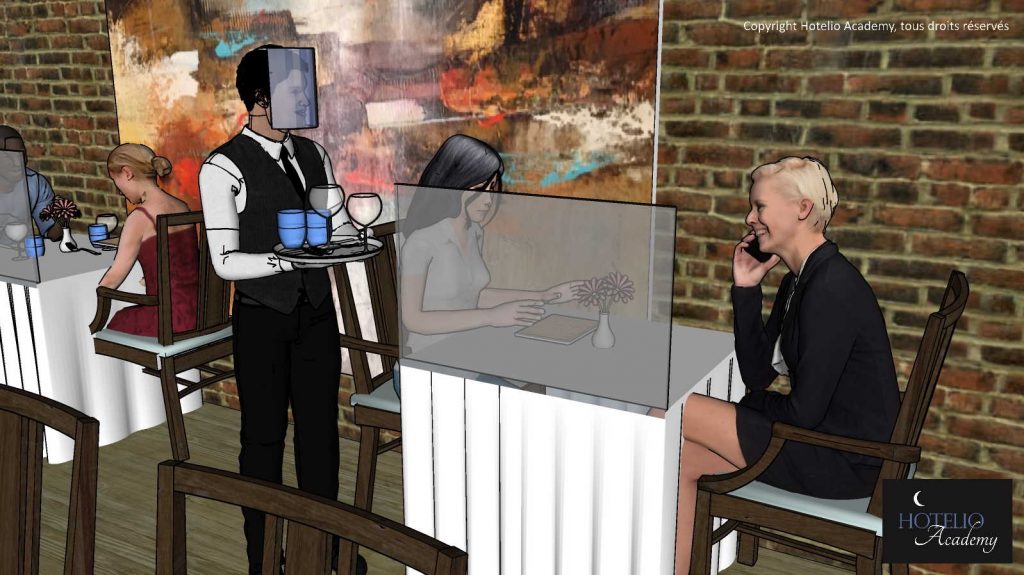
The table will be presented with nothing on it. The cleaner will prepare in advance sets of cutlery, glasses, small table equipment, placed on trays and plastic cover so that the elements are no longer touched by anyone. A member of the dining room team brings the items to each table, reassuring the customer about the restaurant’s choices in terms of security. He wears gloves when handling objects, which he eliminates after each sequence. All superfluous objects (vases, trinkets, etc.) must be eliminated from the tables and the room in general.
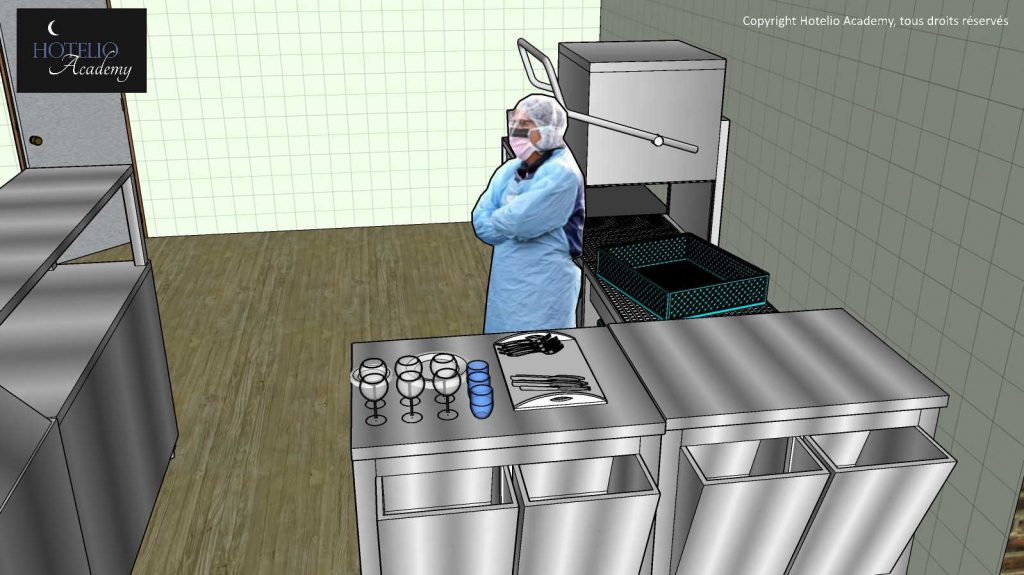
The bar is furnished with plexiglass or glass screens, providing space for service. The glasses are served by an employee equipped with disposable gloves (or with bare hands, with an automatic hand disinfection system placed at the bar, but quite expensive).
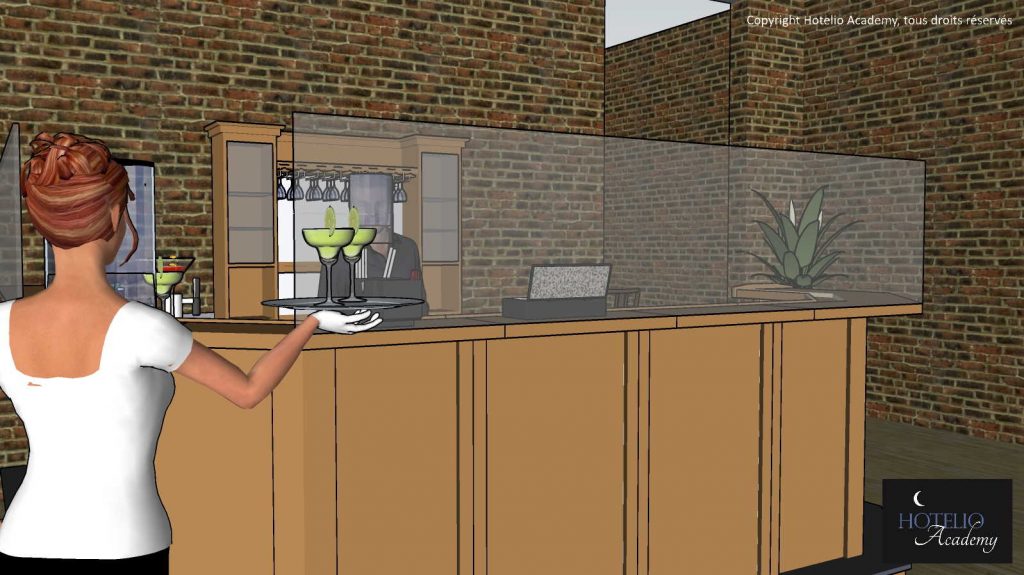
The order is quickly taken by the head waiter, favoring an electronic solution allowing instant distribution in the kitchen with a reduction in contact between staff members.
A debate exists amongn the professionals of the fine dining service industry about the port, or not, of gloves during the service (Pauline Gachet, La Chèvre d’Or, Eze). Some are for the wearing of disposable gloves changed frequently, others prefer a service with bare hands, but disinfected each time in the kitchen (Guillaume Bonnard, Sodexo).
Unfortunately we have to rethink the principles of serving drinks, customers serving themselves to avoid contact as much as possible (Guillaume Bonnard Sodexo).
It seems necessary to us to rethink a sort of oshibori-type ceremony (presentation of a disinfectant towel to the client). Several tracks are envisaged with specific gestures.
The preparations in the dining room are made from a pedestal table fitted out with glass or plexiglass plates.

Fourth step, the leaving of the guest
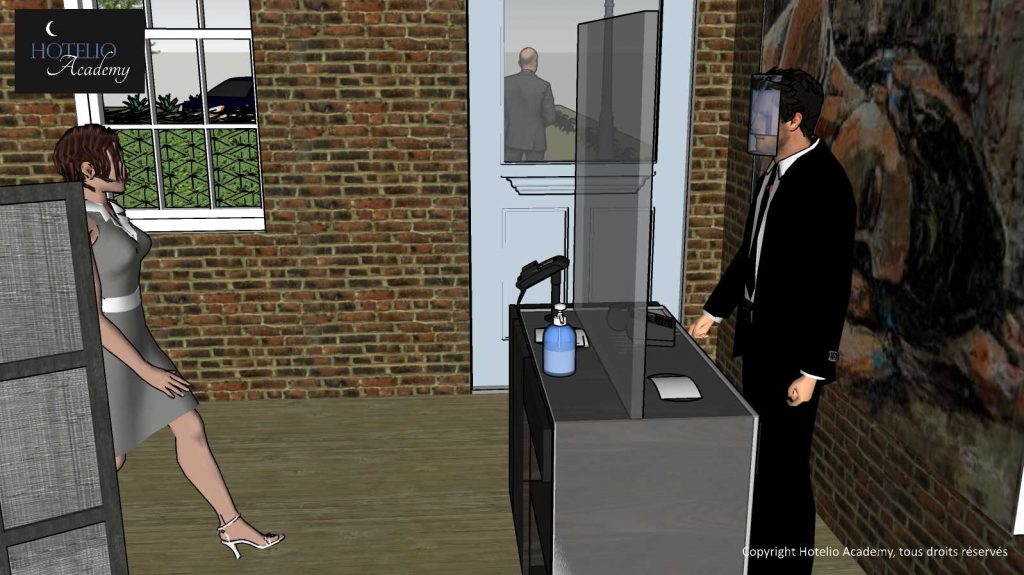
The guest will take a direct and spacious path (more than two meters wide). He will present himself to the cashier, protected by a plexiglass or glass plate. The bank card payment terminal will be placed on theguest side.
The cashier will give the customer, in the form of a departure gift, a fabric mask bearing the restaurant logo (idea of Hubert Jan UMIH)
The guest leaves by the door formerly reserved for the fire exit and joins the parking lot.
We are currently preparing videos of postures, procedures, gestures … please contact us at direction@maitredhotel.online
You can find us on facebook by clicking here
Written by Gil Galasso
Meilleur Ouvrier de France Maître d’hôtel, maître du service et arts de la table
Phd in history of fine dining service
President of : Association for the safeguarding and promotion of the heritage of fine dining service

